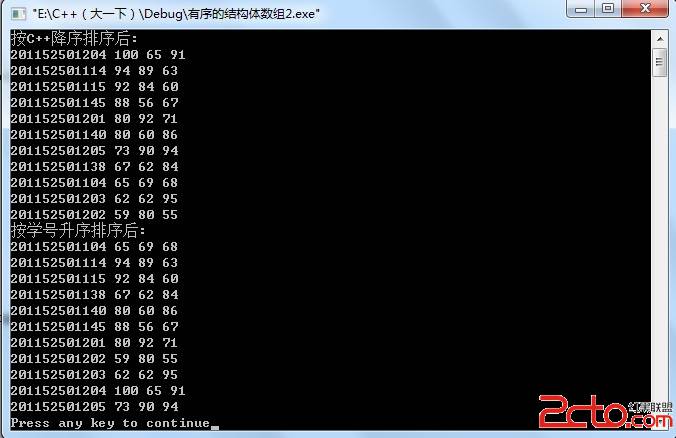第16章 模板与泛型编程(14)
16.6 模板特化
16.6.1 函数模板的特化
模板特化(template specialization)是这样的一个定义,该定义中一个或多个模板形参的实际类型或实际值是指定的。特化的形式如下:
关键字template后面接一对空的尖括号(<>);
再接模板名和一对尖括号,尖括号中指定这个特化定义的模板形参;
函数形参表;
函数体
template<class T>
class Foo{
public:
static T count(){return ctr;}
private:
static T ctr;
};
template<class T>
T Foo<T>::ctr;
template<>
class Foo<double>{
public:
static double count(){return ctr+1;}
private:
static double ctr;
};
double Foo<double>::ctr;
template<class T>
class Foo{
public:
static T count(){return ctr;}
private:
static T ctr;
};
template<class T>
T Foo<T>::ctr;
template<>
class Foo<double>{
public:
static double count(){return ctr+1;}
private:
static double ctr;
};
double Foo<double>::ctr;Foo<double> f1=Foo<double>();
cout<<f1.count()<<endl; //1
Foo<int> f2=Foo<int>();
cout<<f2.count()<<endl; //0
Foo<double> f1=Foo<double>();
cout<<f1.count()<<endl; //1
Foo<int> f2=Foo<int>();
cout<<f2.count()<<endl; //01. 声明模板特化
与任意函数一样,函数模板特化可以声明而无须定义。模板特化声明看起来与定义很像,但省略了函数体。
template<>
class Foo<float>;
template<>
class Foo<float>;模板特化必须总是包含空模板形参说明符,即template<>,而且,还必须包含函数形参表。如果可以从函数形参表推断模板实参,则不必显式指定模板实参。
2. 函数重载与模板特化
在模板特化版本的调用中,实参类型必须与特化版本函数的形参类型完全匹配。
3. 不是总能检测到重复定义
如果程序由多个文件构成,模板特化的声明必须在使用该特化的每个文件中出现。
与其他函数声明一样,应在一个头文件中包含模板特化的声明,然后使用该特化的每个源文件包含该头文件。
4. 普通作用域规则适用于特化
对具有同一模板实参集的同一模板,程序不能既有显式特化又有实例化。
特化出现在对该模板实例的调用之后是错误的。
摘自 xufei96的专栏
补充:软件开发 , C++ ,




